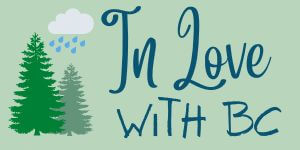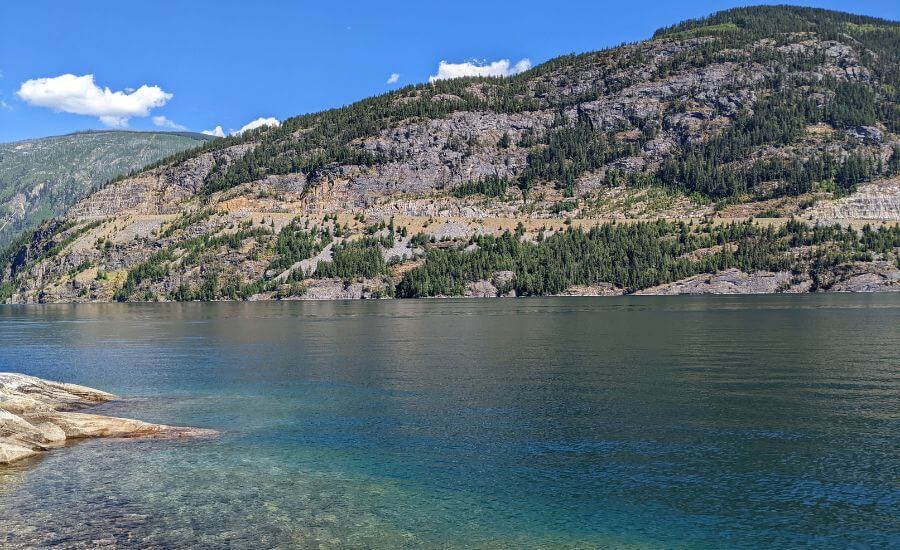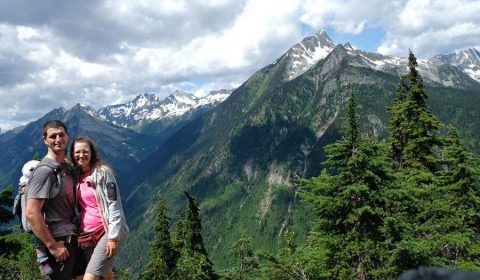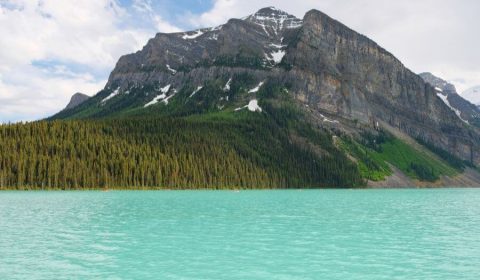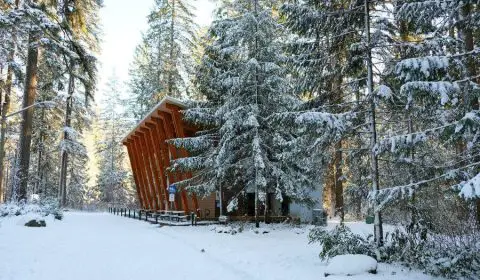Catching our first glimpse of Slocan Lake from a cliff top viewpoint by the road, I felt like I was transported back to the coast. But not the British Columbia coast, rather the Adriatic Coast in Croatia, or perhaps somewhere else by the Mediterranean Sea. The water was perfectly turquoise and glimmering in the sunshine. We walked in a fragrant pine forest. And we were in a hidden corner of British Columbia where very few visitors go.
Slocan Lake is in the Slocan Valley, in the West Kootenay region, in southeastern British Columbia. It’s off the main tourist routes. It offers swimming, boating and hiking opportunities, and first and foremost: beautiful, unspoilt, tranquil nature. It’s one of the countless amazing lakes in inland BC that few people ever heard of, because there are too many (and British Columbia summers are too short to explore even a small fraction of the province properly). It’s exactly the kind of place we adore.
Don’t just visit BC. Experience it.
Discover BC’s hidden gems and breathtaking routes without the planning headache. Your perfect road trip is just a click away.
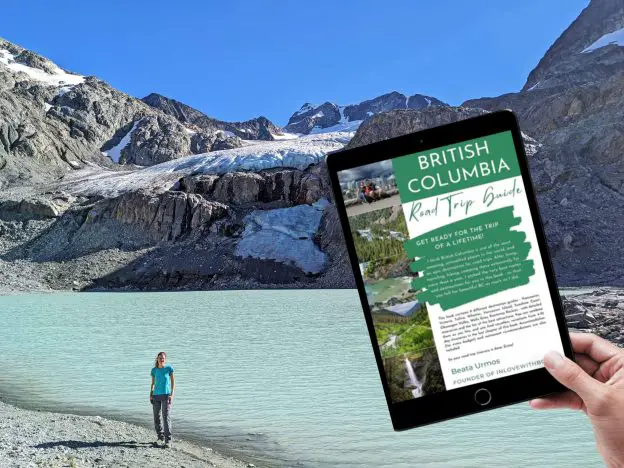
But how to get there and what to do at Slocan Lake? I have a lot to tell you about it.
How to get to Slocan Lake?
If you leave from Vancouver, we recommend planning a longer road trip that includes Slocan Lake. You can’t visit only one lake on a BC road trip when there are so many. But Slocan Lake was definitely among our favorites. We got there from Revelstoke, after visiting Glacier and Revelstoke National Parks, and continued towards Osoyoos, home to the warmest lake and the only desert in Canada.
The drive from Revelstoke is quite pretty and very quiet, and it includes the Upper Arrow Lake ferry. This ferry from Shelter Bay to Galena is free and incredibly scenic! Then you drive along Summit Lake (stop for at least a swim) before reaching the road running on the eastern shore of Slocan Lake.
If you drive from Vancouver through Osoyoos and Castlegar, there’s no need to take a ferry. On the way you can stop at Osoyoos Lake or Christina Lake, and they’re especially lovely on a hot summer day. But I have to admit that this route is the most boring of the three.
The third route from Vancouver is through Kelowna, and it includes the Needles Cable Ferry which runs on Lower Arrow Lake, between Needles and Fauquier. If you choose this, definitely stop at the Okanagan Lake, and enjoy the towns, vineyards, beaches and lively towns of the Okanagan region.
Best things to do at Slocan Lake
Once you’re there, let’s see what to do. (Mostly, just get lost in nature.)
Jump in at Bannock Point Recreation Site
BC Highway 6 follows the eastern shore of the lake and offers pretty views. Bannock Point Recreation Site was our first stop as we arrived at Slocan Lake, and it will be yours, too, if you drive from the north. It’s a lovely place to stretch your legs. There’s a small campground and a beach area right by the lake, 10 minutes hike down from the parking lot.
You can jump into the water from the cliffs, or just walk around and soak in the stunning views. There are two small pebbly bays, great for sitting down for a picnic and letting the kids play in the water.
Relax on Slocan Beach
So first of all, Slocan Lake is not that warm. But it’s not as cold as an alpine lake either. Visit it in July or August to give it time to warm up. Summers get very hot in this region, but Slocan Lake is deep – 298 meters at the deepest point -, so it could only slowly warm up and will be quite refreshing even on the hottest day.
If you’d enjoy the water at an easily accessible beach with all the facilities, visit Slocan Beach in Slocan City, at the southern end of the lake. In reality it’s a village, but it’s usually referred to by its old name of Slocan City so that locals can distinguish it from Slocan Park and South Slocan.
Slocan Beach is a sandy one – a rare exception among the mostly rocky east side beaches and the pebbly west side beaches. Slocan Beach Park has a designated family beach area, a grassy lawn with picnic tables behind the beach, washrooms, parking and even a boat launch.
Granted, it doesn’t offer such an unforgettable view as any of the beaches in Valhalla Provincial Park, but it’s the most convenient to access.
Hike in Valhalla Provincial Park
Our favorite thing to do at Slocan Lake was, of course, hiking. Hiking to some incredible beaches in the wilderness, for example.
The Evans Beach hike in Valhalla Provincial Park is the one to start with. This lakeshore trail starts in Slocan City, just after crossing the Slocan River via a bridge, and it gives access to the backcountry if you’d like to hike further.
It’s a 15 km return hike, and alternatively you can access the beach by boat, too. But the coastal hike is absolutely worth doing, with a scenic, meandering trail on the steep shoreline among ancient cedar and hemlock trees, with optional beach stops and picnic stops. It’s a well-maintained trail, but the bouldered slopes require some effort (and long enough legs, if I consider small kids) to get through.
Pebble Beach is the first one, about 4 km from the trailhead. It has crystal clear water and magical views. Right next to it there’s private land with a holiday home, so watch the signs in order not to trespass.
Evans Beach is a further ~4 km away, and it’s hard to decide which one is more beautiful. I loved the tranquility of both beaches, and I loved this scenic trail so much! There’s no facilities at either beach, but you’re in paradise.
And Evans Beach is not the end of the trail. It’s the start of the remote backcountry trails. However, we haven’t gone further with a toddler, so it’s up to our imagination how the rest of this paradise looks like.
Rent a boat
Finally, a fun and easy way to enjoy views from the water and find secluded coves and beaches: rent a boat. Or kayak, canoe, SUP, you choose.
Overwhelmed by BC trip planning?
Relax. We’ve handled all the details. Get your easy-to-follow guide and start your unforgettable adventure.
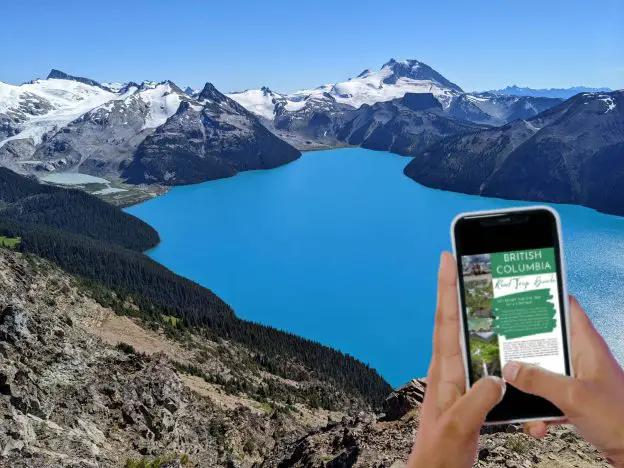
Slocan Lake camping: Springer Creek RV Park and Campground
Camping is another of the great things to do at Slocan Lake. Experience the tranquil wilderness, enjoy the mild summer nights (no frost on the benches in the morning, like in the Canadian Rockies), roast marshmallows and walk by the local waterfall on your way to the shower block. We stayed at Springer Creek RV Park and Campground, and it was one of our favorite BC campgrounds.
You can also camp at Silverton Campground in Silverton, Karibu Park in Winlaw or Centennial Campground in New Denver. Recreation sites in Valhalla Provincial Park, Summit Lake Provincial Park and Rosebery Provincial Park offer more basic options.
Springer Creek RV Park and Campground is a quiet one located in the forest, with a coin-operated shower and creekside tent sites. We were greeted warmly, had our privacy and were close to Valhalla Provincial Park. And there’s the creek and the lovely waterfall. It’s an idyllic campground, and despite visiting in summer, it didn’t feel busy. Like this whole region. A hidden paradise, with turquoise shades and endless pine forests. Your Canadian postcard.
5 essential things to pack for tent camping in British Columbia
Lightweight tarp (two of them, actually): shelter from the rain, shade from the sun and an extra layer under your tent. It can rain any time of the year, and tarps kept us (and our tent) dry during so many downpours. Nothing fancy, just a simple, lightweight tarp – and a…
Paracord: to fix the tarp and to solve a million other problems. Really, paracords are versatile and come handy in so many situations while camping. Have a spare one, keep it in the trunk of your car.
Mosquito repellent: the mosquitoes in some areas of BC can be vicious, especially in spring and early summer. Use a repellent spray, mosquito patches or a mosquito head net (or all of them).
Lighting: always, always bring a separate source of light (and I don’t mean your phone). If your hands can be free, it’s ideal: headlamps and/or lanterns. A lantern is great for hanging out by the fire or lighting up the tent for evening card plays.
Camping stove: don’t rely solely on campfires for cooking food. Campfire bans can come in at any time, or the wood might be too wet. Bring a classic propane stove, extra points if it has wind-blocking panels.
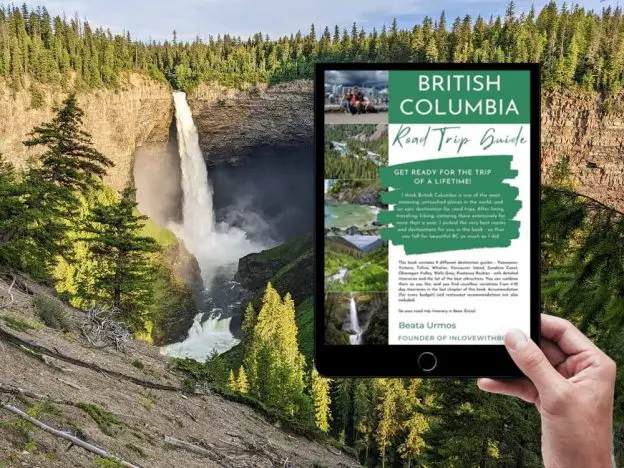
BC Trip Planning is Overwhelming. So We Did It For You.
Our compact guide delivers step-by-step itineraries to BC’s best sights and hidden gems.
